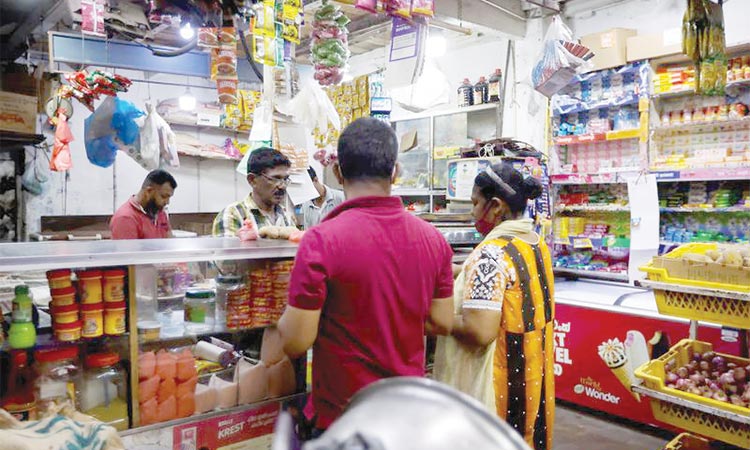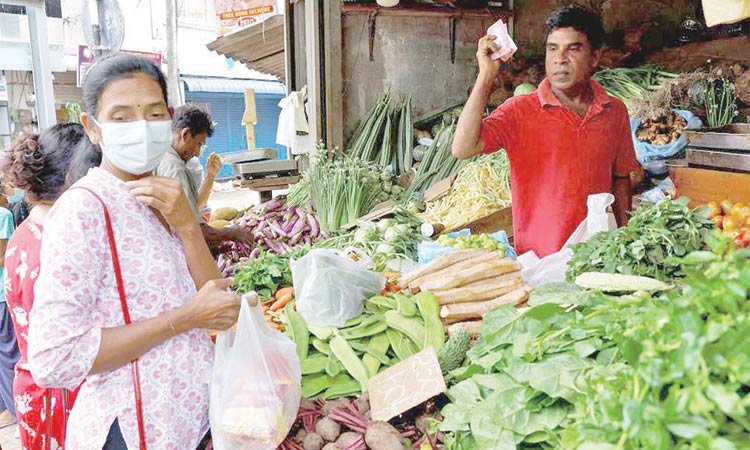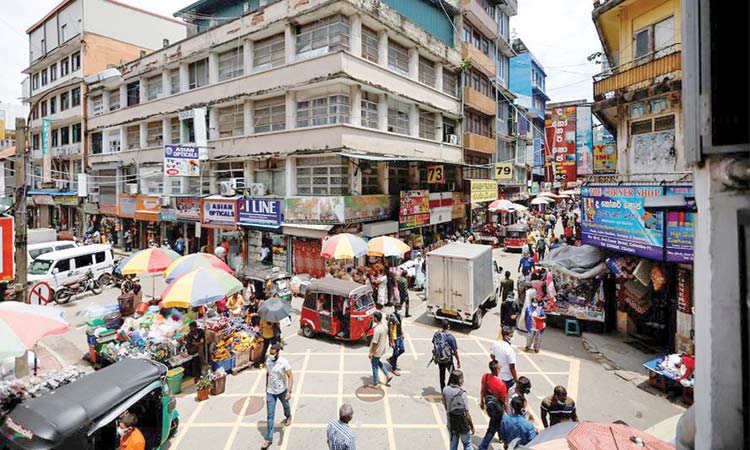Sri Lanka devalues rupee, seen as step towards getting IMF help

A mahout walks a tusker along a busy road in Colombo, Sri Lanka. Reuters
Late on Monday, the Central Bank of Sri Lanka, with immediate effect, set an exchange rate limit of 230 rupees per dollar compared to a limit of 200-203 that had prevailed since October.
Analysts said the depreciation was likely done to encourage remittances, a major source of foreign exchange in Sri Lanka, which dropped to a 10-year low of $5.49 billion in 2021 as a result of the COVID-19 pandemic.
Sri Lanka’s foreign reserves fell to $2.36 billion at the end of January and it is due to repay about $4 billion in debt in the rest of 2022, making it likely that government will seek IMF assistance.
As yet, Sri Lanka has not formally sought talks on an IMF programme, an IMF official said, declining to be named.
“We believe this will support growth and assist us to face external challenges better,” Cabinet spokesman and Media Minister Dullas Allahaperuma told reporters on Tuesday.
He did not say whether the government would approach the IMF.
“Currency flexibility is something IMF will see as a pre-condition to a programme, so it makes future negotiations with them easier,” Thilina Panduwawala, Head of Economic Research at Frontier Research said.
“But without clear communication on intention for IMF programme and debt restructuring, it does not mean much right now.”
Analysts said the devaluation was insufficient by itself, and the government needed to take additional policy steps, including increasing taxes to shore up public revenues and adjusting fuel prices.
“The recent 100 bps hike in key policy rates combined with the exchange rate correction are key stepping stones for the country to move towards an IMF led restructuring programme,” Asia Securities said in its latest Macro Outlook update.
“Given the relatively unsustainable level of debt as outlined by the IMF during its recent Article IV assessment, we continue to factor a restructuring during the year.”
Some analysts said the central bank should have depreciated by more to achieve to boost remittances significantly, and some expected an even bigger devaluation of up to 25 per cent later in the year.
“Hawala” traders, who transfer funds informally between countries without physically moving money, adjusted their rate to 270 rupees per dollar after the CBSL announcement, having previously offered a rate around 255 rupees, market sources said.
Umesh Moramudali, an economist attached to the University of Colombo, said the exchange rate limit should have been set at about 250-260 rupees per dollar to bring in more remittances.
“This move could help exporters but it is too little, too late for migrant workers who are now used to higher curb rates and are unlikely to shift to bank rates,” Moramudali said.
CBSL called on the government to incentivise remittances and foreign investments in its latest monetary policy announcement.
In December, CBSL announced a host of measures including giving an additional 10 rupees per dollar as an incentive but this had limited impact with remittances dropping 61.6 per cent in January to $259 million from $675 million a year earlier.
Meanwhile Indika Prasanna Kumara ventures out every afternoon to try to find 200 litres of diesel for the Broadway Kids apparel factory in Sri Lanka so it can run its generators during power cuts and keep working.
“We have to scout for different fuel stations because of the shortages, then wait in line for eight hours or longer,” Kumara said as he and two colleagues from the fuel-finding team poured their latest haul into a generator at the factory, which employs 275 workers in the commercial capital of Colombo.
“Once we get the fuel we have to guard the cans because they might be stolen. That is how desperate people are for fuel.”
Sri Lanka is facing its worst financial crisis in a decade with foreign exchange reserves shrinking 70 per cent to $2.36 billion in January.
The dollar shortage has left the island struggling to pay for imports including food, medicine and fuel.
A serious shortage of diesel has shut multiple thermal power plants causing rolling power cuts, sometimes lasting more than seven hours a day.
Hit by the regular power outages, Broadway Kids, which produces clothes for British brands including Next, Matalan, Frugi and John Lewis & Partners, is among dozens of apparel factories struggling to meet production targets.
“We operate on very thin margins,” said Broadway Kids’ owner Chula Dharmadasa. “I’m already getting warnings from clients that if we miss delivery targets we have to air freight goods, which we cannot afford to do.”
“Our orders will get cancelled and buyers will move to competitors like Bangladesh,” he said, adding that order losses of one company can impact the entire value chain and potentially lead to job losses.
Garments are Sri Lanka’s second largest foreign exchange earner and the sector was just seeing a pandemic recovery with export earnings increasing by 22.1 per cent to $514 million this January, compared with January 2021.
Overall, the sector has about 300 factories that generated revenues of $5.4 billion in 2021.
“The situation is now critical as plants are coming to a halt due to lack of diesel for generators, staff transport and goods transport,” said Yohan Lawrence, secretary general of the Joint Apparel Associations Forum, which represents the largest apparel companies in Sri Lanka.






